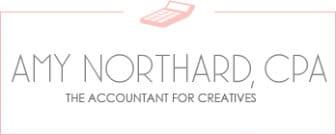You might have never thought about filing taxes for a babysitter or nanny. After all, that’s a cash under the table situation, right?
Not so fast. You didn’t think that the IRS was going to let that slide, did you? They actually have special rules pertaining to household employees, which can include babysitters, nannies, or even elder caretakers, housekeepers, gardeners, and drivers. And many people who hire childcare should be paying Social Security, Medicare, and/or unemployment tax for them—and just have no idea.
But, like many tax rules, it can be a bit complicated to figure out whether they apply to your situation (and it may seem easier to just keep paying cash and hoping you don’t get caught). I’m here to help you keep things easy and above the bar. Work through the questions below like a flow chart to figure out whether you should be withholding taxes for your babysitter and providing them documents at the end of the year—we’ll tell you where you can stop if you’re tax free, or if you need to keep reading to figure out how to file nanny taxes right.
Is Your Babysitter Related to You?
It’s worth noting right off the bat that if you’re paying your spouse, your child who’s under 21, or your parent to watch your kids, you’re off the hook for withholding taxes or providing a W-2. You can stop reading here!
If you’re working with someone outside the family, keep reading.
How Old is Your Babysitter?
If your babysitter is under 18, you generally don’t need to worry about withholding taxes. The only exceptions to this is if watching your kids is their primary occupation OR if you pay them over $1,000 in any given quarter. If they’re a student, babysitting isn’t considered they’re primary occupation, and you’re good to stop reading and not worry about taxes here!
Does Your Babysitter Work for Themselves or an Agency?
If you hire and pay your child care through an agency or another third party, you don’t need to worry about withholding taxes since, theoretically, your nanny is an employee of that agency, and all their taxes are handled through them.
If your babysitter is doing it for themselves, keep reading.
How Often Does Your Babysitter Work for You?
Next, you have to figure out is whether your babysitter is considered an employee or an independent contractor in the eyes of the IRS.
In some cases, your babysitter could be seen as an independent contractor, and therefore would be responsible for all their own taxes. For example, if they work on a more ad-hoc basis (e.g., you call them up to see if they’re available occasionally but they have the power to say no without repercussions), they’ll probably be seen as an independent contractor. As long as you’ve paid them less than $2,100 in a year and less than $1,000 in any given quarter, you can stop reading here and don’t need to worry about paying taxes. If you have paid over those thresholds, keep reading.
But if there’s any sort of regularity to your babysitter’s schedule (e.g., they work for you every weekday or consistently on Friday nights), where you expect them to show up to your place unless they tell you otherwise, they’ll almost certainly be seen as an employee and you should move on.
How Much Have You Paid Your Babysitter This Year or Quarter?
If you’ve determined your babysitter would be considered an employee to the IRS, you’ll need to figure out if you’re going to reach the payment threshold to withhold taxes. Even if your babysitter could probably be seen as an independent contractor, if you hit these payment thresholds, you should be filing taxes and providing a W-2 regardless.
If you’re going to be paying your babysitter less than $1,000 in any given quarter and less than $2,100 in the year (in 2019), you don’t have to withhold taxes. You can stop reading here!
If you do expect to be paying them more than $2,100 over the course of the year or more than $1,000 in any given quarter, you will need to withhold taxes and provide your employee with a W-2. Read on to learn how!
Okay, Now How Do I File Babysitter Taxes?
Figuring out exactly what you owe the IRS for a babysitter and how to pay can be complex, so I definitely advise working with a CPA if you’ve reached this step. But I’ll give a quick overview below.
If you paid cash wages of $2,100 or more to any one household employee in 2019, you need to pay social security and Medicare taxes. This amounts to 15.3% of wages, and you can either pay it all yourself or withhold half of it from their pay.
If you paid $1,000 or more in any quarter of the year, you’re also responsible for paying federal unemployment tax, which is 6% of cash wages up to $7,000 in wages a year per employee.
You’ll also need to look into if you owe state employment taxes—this varies by state.
You’re not required to withhold federal income tax for household employees but can choose to if they ask and you agree.
Once you hire a nanny, you’ll need an Employer Identification Number (EIN) to file. You can apply online here.
Throughout the year keep track of how much you’re paying your sitter (a spreadsheet is a simple way). You’ll want to pay estimated nanny taxes quarterly, or—if you’re employed—increase your withholding to cover what you’ll owe for a household employee.
After the year is over, you’ll have a few steps to take to wrap up your taxes. By January 31, you’ll need to file Form W-2 (explaining how much you paid your employee and how much you withheld) and Form W-3 (to let the Social Security Administration know how much you’ve paid).
Finally, you’ll need to file Schedule H with your normal taxes by April 15 to let the IRS know how much you paid in household employment taxes.
Last but not least, if you’re paying for child care so you can work or look for work, don’t forget you might be able to get some tax credits for the cost to help you save! Learn more here.
Is There an Easy Way to File Nanny Taxes?
If the items above seem to be a bit overwhelming or time consuming you will want to look into using a nanny payroll tax service to take care of all of these items for you. I recommend HomePay from Care.com for several reasons:
- HomePay will handle the paperwork to set you up with state and federal tax IDs
- Calculate gross and net pay
- Run payroll automatically so you can set it and forget it
- Allow you to pay via direct deposit
- Prep and file year-end tax documents including W-2 forms
- Handle all changes in tax rules to avoid penalties
- Provides excellent support for any questions you have throughout the year
Abridged By Amy
- Many people who hire childcare should be paying Social Security, Medicare, and/or unemployment tax for them—but aren’t!
- If you hire someone for child care who is over 18, who you’re not related to, who is expected to work for you on a regular schedule, and who you’ve paid over $2,100 in the year (or over $1,000 in any given quarter), you should be withholding taxes for them.
- Check with your CPA if you aren’t sure whether this applies to you, or how to file your nanny taxes correctly!
- Consider using a nanny payroll service like HomePay to take care of all of the details of nanny taxes and household employee payroll.

